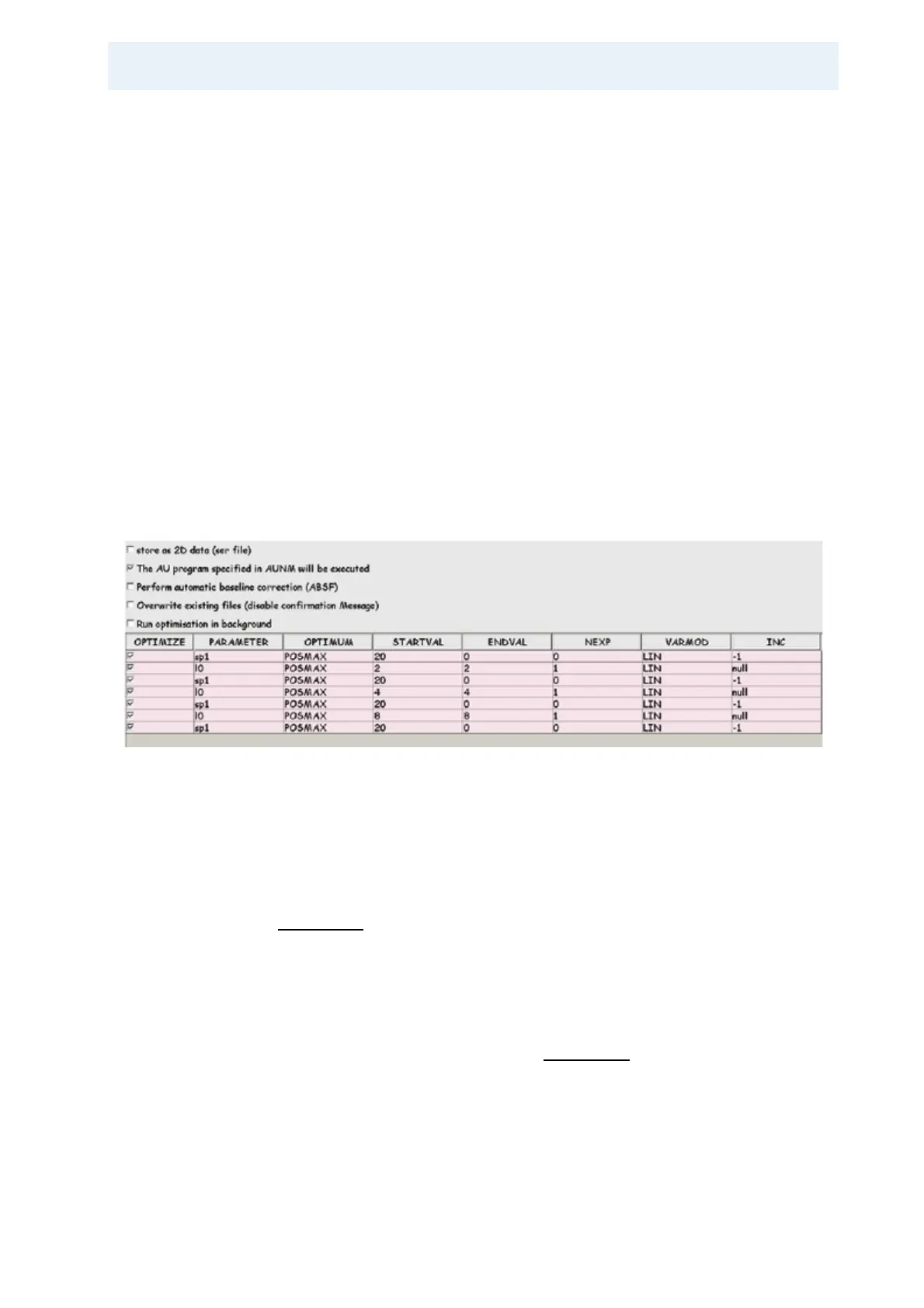MQ-MAS: Sensitivity Enhancement
User Manual Version 002 BRUKER BIOSPIN 237 (327)
CNST3: (in ns) = 50. This is the maximum timing resolution that can be obtained
on a shaped pulse, with AV or AVII hardware. However, if cortab is defined for
that nucleus, 100 ns is the maximum timing resolution possible in a shaped pulse.
CNST31: Magic angle spinning frequency, used for the calculation of the duration
of the sweep and the echo delay.
The calculation of the sweep is done via an AU program called zg_dfs. It calcu-
lates the sweep according to the parameters given above and stores it as a shape
file, which is called dfs. After the calculation the AU program starts the acquisition.
In order to ensure that the correct sweep is always used, it is advisable to enter
the name of this AU program into the parameter aunm, and start all acquisitions
using the command xaua. All that needs to be optimized now is the appropriate
RF power level for the sweep, defined as parameter sp1. As a first guess a value
of 3 dB less RF power than for the excitation pulse should be used (i.e. SP1 =
PL11 + 3 dB). You may use popt for the optimization, where SP1 is decremented
by 1 dB up to the same power level used for the excitation pulse (e.g. from 20 dB
to 0 dB). Initially a sweep of one whole rotor period (i.e. L0 = 1) can be used. The
optimization of SP1 can be repeated e.g. for half a rotor period, a quarter of a ro
-
tor period and so on. With a shorter sweep you will find that higher RF power will
be needed.
Figure 18.5. Example for popt to Set-up for Optimization of DFS.
Note that the option “The AU program specified in AUNM will be executed” is
checked. This ensures that the sweep is recalculated for the variation of l0 and
stored in the shape file dfs. The initial value of l0 is 1.
Figure 18.5. shows a popt window with successive optimization of SP1 for sever-
al fractions of rotor periods l0. Note that the check mark for “The AU program
specified in AUNM will be executed” MUST be set, in order to force recalculation
of the shape for each step of the optimization. In this case acquisition is run with
the command xaua, which ensures that the correct sweep is stored in the shape
file dfs. In the above example optimization proceeds such that in the first run SP1
is varied from 20 to 0 in 21 steps. Then L0 is set to 2 and SP1 is again varied from
20 to 0. Then l0 is set to 4 and so on.
Figure 18.6. shows results of the variation
of the RF power level of sweeps with different durations. Experiments have been
run at 20 kHz and optimization procedures for 1, 0.5, 0.25, and 0.125 rotor peri
-
ods corresponding to 50, 25, 12.5, and 6.25 µs respectively have been run. One
can see that as the duration of the sweep is reduced the required RF field ampli
-
tude is higher. This is true when the spinning frequency is kept constant and the
sweep is a smaller fraction of a rotor period and when the sweep is kept at e.g.
